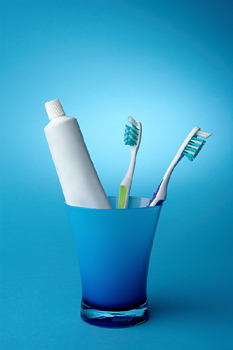Having braces can present some new challenges when it comes to oral hygiene. Preventing tooth decay can be a big challenge simply because of the tendency for braces to trap food under the wires and between the teeth and the brackets. Here are a few tips to keep your teeth healthy while wearing your braces:
1. Eat Braces-Safe Foods
Keeping your teeth from decay starts with a proper diet. Foods that are high in sugar or starch can cause more plaque which is difficult to remove during your brushing. There are certain foods that should be avoided while wearing your braces. First, sticky foods like caramel or gum can get stuck in your braces and be difficult to remove during brushing. Next, hard foods such as nuts and candy could bend wires or even break a bracket. Foods that are firm or hard to bite into like apples, carrots, or corn on the cob should be avoided. As much as we like to snack on them, those crunchy treats can harm your braces. Things like chips, ice, popcorn can also bend or break your braces. On the other hand, bananas, mangoes, milk, water, poultry, and pasta all tend to be low in enamel-busting acids.
2. Proper Brushing
You want to place your toothbrush at a 45-degree angle against the gums in order to clean the whole tooth, and brush gently in the area between the wiring and the teeth. Use a softer toothbrush with fluoride paste for best results. Rinsing every day will help, too. Rinsing is important regardless, but especially important when you have braces as you need to disinfect the entire mouth, including those spots under the braces where your brush can't always reach.
3. Ask About Special Cleaning Tools
There are also special brushes, or other tools, to get under and clean your braces. You can also find many of these items at your local pharmacy.
4. Regular Teeth Cleaning
It's important to keep your routine appointments with your dentist and dental hygienist for a thorough cleaning twice a year or as directed. The exact frequency of these visits will be up to your dentist as some types of braces are more demanding of a regular cleaning than others.
As long as you practice good oral hygiene and follow these basic tips, you should have no problem keeping your teeth from decaying while you wear braces.
 The dreaded cold and flu season is here again! After recovering from your cold, one of the most important steps you can take to avoid becoming reinfected is replacing your toothbrush!
The dreaded cold and flu season is here again! After recovering from your cold, one of the most important steps you can take to avoid becoming reinfected is replacing your toothbrush!










 Great question!
Great question!






